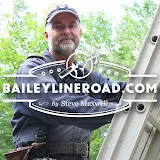0:00
In this video I want to demonstrate for you the step of sealing a distressed chalked paint finish
0:07
This is a piece of spruce. I've stained it ahead of time so that after I put on the chalk paint and rub through
0:18
I get some darker spots that look nice in a kind of old worn-out sort of way
0:22
I've demonstrated how I do all this in another video, but the final step is sealing
0:28
And there's different ways you can do it. By far my favorite way is to use some wipe-on poly
0:34
It's a very thin product. It doesn't really form a film. It soaks in, but it seals quite well
0:39
And from a practical point of view, it protects the chalk paint, which is a little on the fragile side
0:48
And if you rub it a lot, you might get a little bit of white stuff on your hands
0:52
So the sealing solves that problem, and that's the practical advantage. But there's also an aesthetic advantage, as you'll see. You don't have to be too neat with this either
1:02
You just have to kind of get it on the surface somehow. But watch what happens when I spread it around
1:10
It highlights the areas where I've worn through and really brings them out in a lovely sort of way
1:20
And this works just as well if I had used blue or red or green milk paint
1:26
It doesn't have to be light-colored like this. But that's it. One coat will do just fine. It seals properly
1:35
When it's dry, as a final, final step, I'll buff it with this just by hand to make it feel silky smooth under my fingers
1:43
Because there are bits of dust floating around in the air. There always are
1:47
They're going to settle on here, and you'll be able to feel those a little bit after it dries
1:51
But very easy to fix that with a rubbing pad and a beautiful distressed finish that is going to do well in a lot of situations


